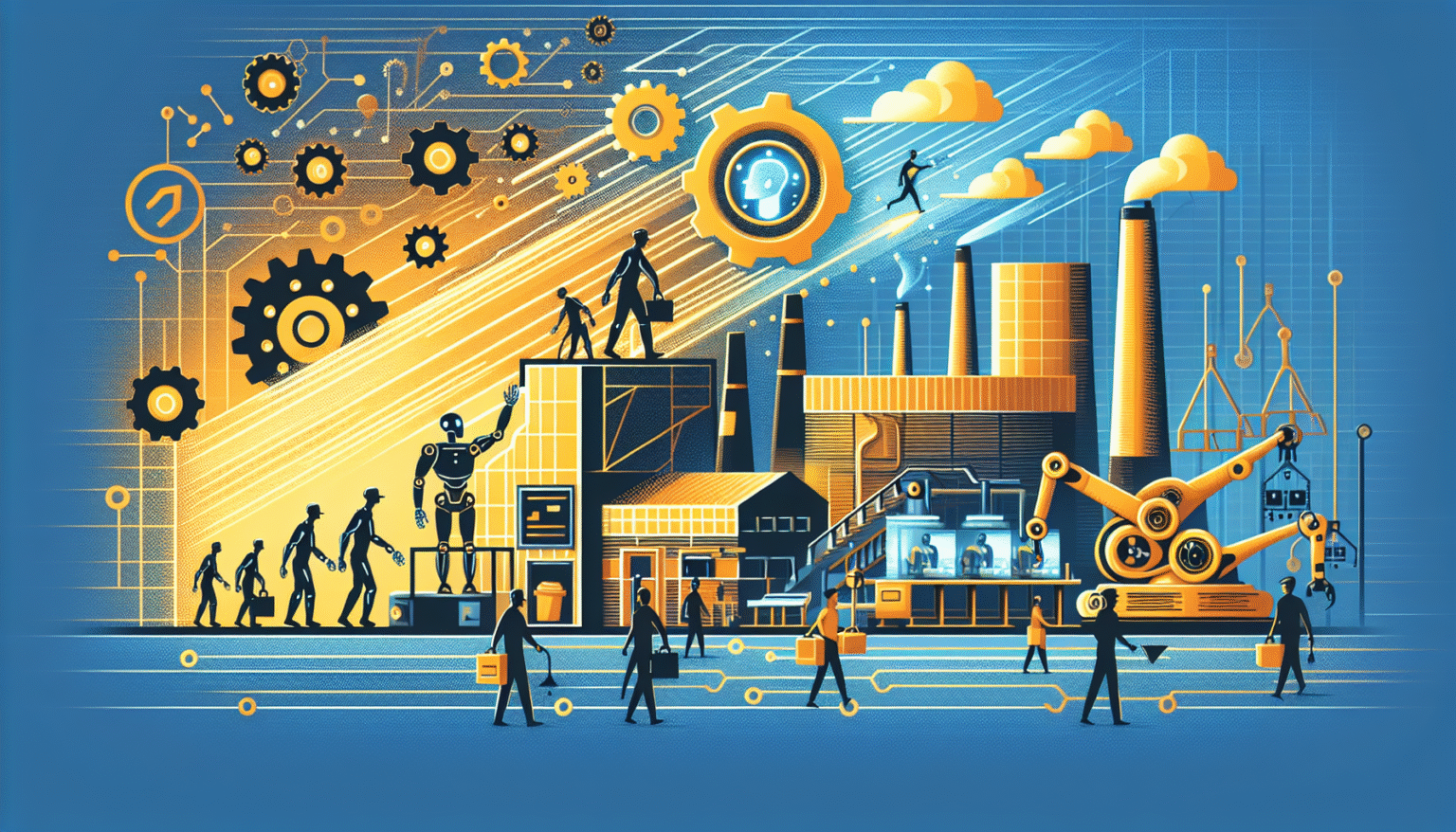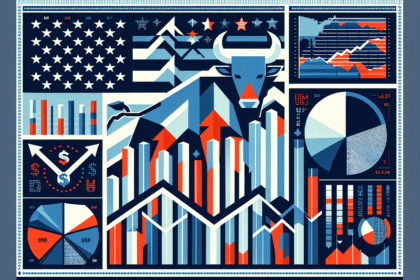How Technology Is Revolutionizing Industry Standards
The Rise of Automation in Manufacturing
Automation has transformed the manufacturing sector by improving efficiency, accuracy, and safety. Robotics, once the realm of sci-fi, are now common on the assembly line. These machines can work tirelessly, performing repetitive tasks with precision that far surpasses human capabilities. For example, the automotive industry has adopted robotic arms for everything from welding to painting, significantly reducing production time and errors.
Moreover, advancements in AI and machine learning enable predictive maintenance, a key innovation that allows machinery to anticipate failures before they occur. This data-driven approach minimizes downtime and extends the lifespan of equipment, resulting in substantial cost savings for businesses.
Enhanced Data Analytics
In the age of big data, industries have access to enormous volumes of information that, when analyzed correctly, provide valuable insights for decision-making. Advanced data analytics tools enable organizations to track performance metrics, customer behaviors, and market trends. For instance, in retail, companies utilize analytics to optimize inventory management, ensuring that products are available when needed without oversupply.
Additionally, predictive analytics is becoming integral in sectors like healthcare and finance. Hospitals use predictive models to improve patient outcomes, while financial institutions deploy these models to identify fraudulent transactions in real-time, thereby enhancing security and customer trust.
Internet of Things (IoT)
The IoT represents a network of interconnected devices that communicate and exchange data over the internet. This technology has significantly impacted industries by facilitating real-time monitoring and control. In agriculture, IoT sensors track soil moisture, temperature, and crop health, empowering farmers to make informed decisions based on accurate data.
In logistics, IoT devices streamline supply chains. Companies can monitor shipments’ locations and conditions, reducing losses due to spoilage or damage. For instance, temperature-sensitive pharmaceuticals can be monitored continuously, ensuring that they remain within required conditions throughout transport, thus safeguarding efficacy and compliance.
Blockchain for Transparency and Security
Blockchain technology introduces a new paradigm of transparency and security across various industries. By enabling secure, tamper-proof transactions, it enhances trust between parties. In supply chain management, blockchain can be utilized to verify the authenticity of products. Each transaction along the supply chain is recorded, providing a clear audit trail.
For example, in the diamond industry, blockchain helps prove the ethical sourcing of gemstones, addressing issues like conflict diamonds. By providing end-to-end visibility, businesses can ensure compliance with industry standards while building customer confidence.
Virtual and Augmented Reality
Virtual Reality (VR) and Augmented Reality (AR) are revolutionizing training and customer engagement. In sectors like construction and real estate, AR allows clients to visualize completed projects before construction begins. This technology can showcase different design options, making the decision-making process more interactive and efficient.
In healthcare, VR is used for surgical training, providing medical professionals with realistic simulations without any patient risk. Such immersive experiences enhance learning outcomes and ensure that practitioners are better prepared for real-life scenarios.
Remote Work Technologies
The COVID-19 pandemic accelerated the adoption of remote work technologies, which have since become integral to business operations. Collaboration tools like Zoom, Microsoft Teams, and Slack enable seamless communication among team members, regardless of their physical location. These platforms facilitate brainstorming sessions, project management, and real-time collaboration, allowing businesses to maintain productivity even when employees work remotely.
Furthermore, advancements in cloud technology ensure that files and resources are accessible from anywhere, promoting a flexible working environment. This shift has not only affected employee satisfaction and retention but has also broadened the talent pool available to companies.
Sustainable Technologies
As sustainability becomes a focal point for consumers and regulators alike, industries are adopting technologies that reduce environmental impact. Renewable energy sources, such as solar and wind power, are becoming more efficient and economically viable. Companies are increasingly investing in clean technology to meet strict environmental regulations and consumer demands for sustainable practices.
Moreover, innovations in waste management, such as AI-driven sorting systems, significantly enhance recycling efficiency, ensuring more materials are repurposed rather than sent to landfills. This commitment to sustainability not only aids the environment but can also improve a company’s market position.
Cybersecurity Innovations
With the increasing reliance on digital technologies comes the growing risk of cyber threats. As businesses become more interconnected, robust cybersecurity measures are paramount. Innovations in cybersecurity—ranging from AI-powered threat detection to advanced encryption methods—are essential in protecting sensitive data and maintaining operational integrity.
Organizations are investing in security solutions that use machine learning to detect anomalies and potential threats in real-time. This proactive approach to cybersecurity helps businesses safeguard their information and build trust with customers.
Supply Chain Innovations
Technology is reshaping supply chain management by enhancing efficiency and resilience. Advanced software systems enable real-time tracking of goods, allowing organizations to respond swiftly to disruptions, such as global pandemics or natural disasters. Machine learning algorithms can optimize routes and inventory levels, significantly reducing costs and waste.
Additionally, digital twins—virtual replicas of physical assets—allow companies to simulate various scenarios, improving strategic planning. By predicting how different factors will affect supply chain operations, businesses can make informed decisions that enhance overall performance.
End-user Interfaces and User Experience
The evolution of user interfaces, driven by advancements in UX/UI design, improves how consumers interact with digital products and services. Companies are investing in user-centered design processes that prioritize customer satisfaction, resulting in more intuitive applications and websites.
With the rise of mobile technology, responsiveness and accessibility are crucial. Businesses are leveraging adaptive design principles to ensure their platforms provide optimal experiences across all devices. Consequently, this focus leads to higher engagement rates and customer loyalty, which directly impacts revenue growth.
3D Printing and Customization
3D printing has emerged as a revolutionary force, enabling rapid prototyping and customization across various industries. This technology allows manufacturers to produce complex parts with minimal material waste. In the aerospace sector, for instance, companies are using 3D printing to create lightweight components, improving fuel efficiency and performance.
Moreover, 3D printing empowers consumers with a level of customization previously deemed impractical or expensive. From personalized healthcare products to customized consumer goods, businesses can now cater to individual preferences, fostering deeper customer relationships.
Conclusion
Technology’s influence on industry standards is profound and multifaceted. As automation, data analytics, IoT, blockchain, VR/AR, remote work tools, and other innovations continue to evolve, businesses must adapt to stay competitive. By embracing these technologies, organizations are not only enhancing operational efficiency but also fundamentally transforming their approaches to customer engagement, product development, and sustainability, paving the way for a new era of industry standards.






